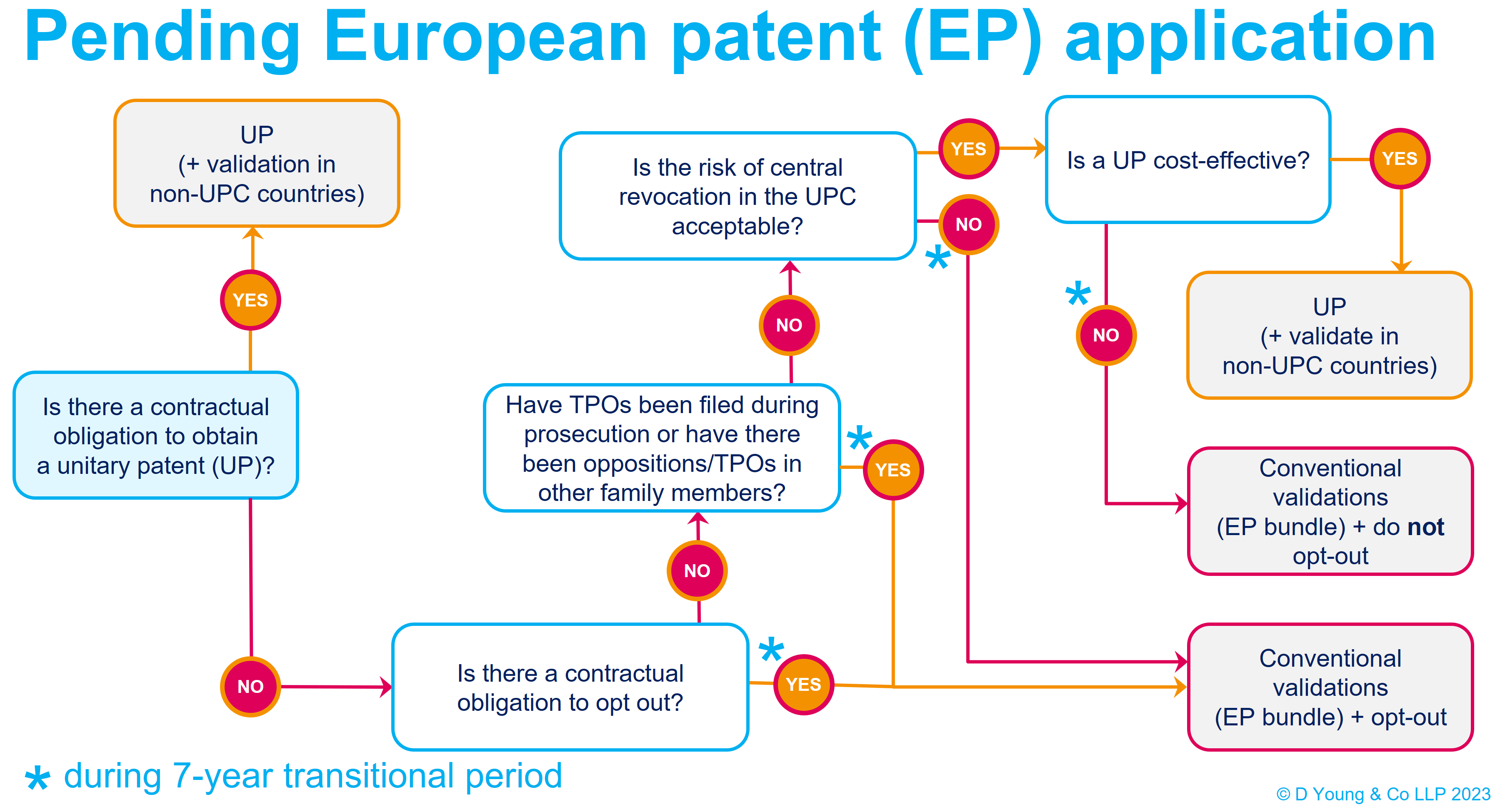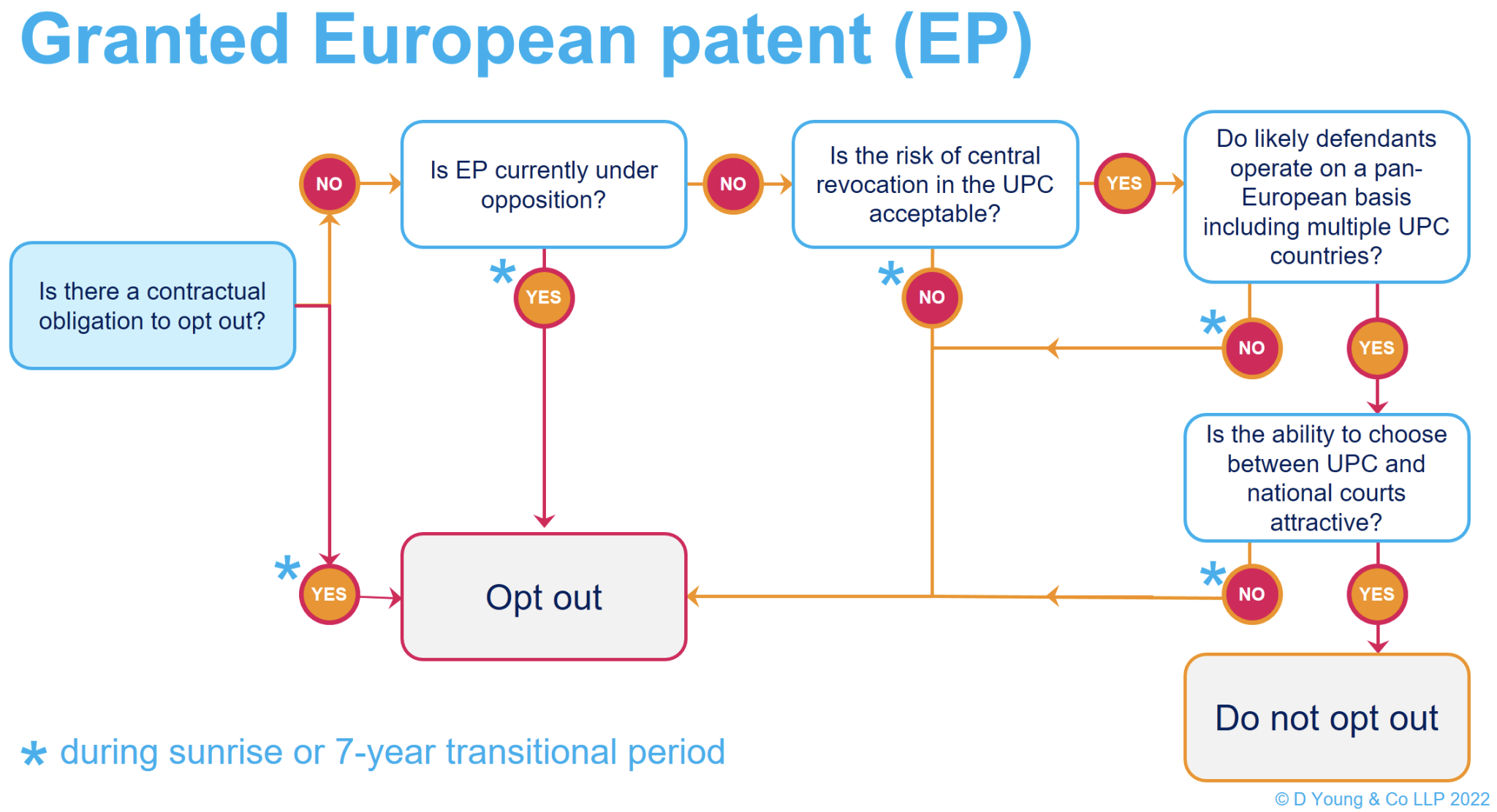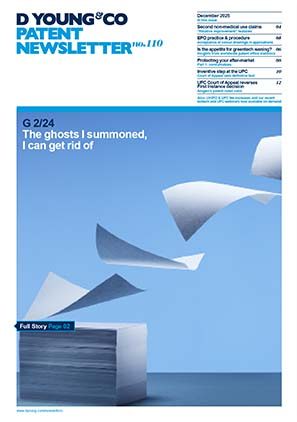Pros and cons of the unitary patent and Unified Patent Court
This article was last updated 18 June 2023.
Pros and cons of the unitary patent
A unitary patent (UP) will be a single patent right, having unitary effect across up to 24 European Union member states. Specifically, a UP will take effect in all states that are:
- participating member states of the UPC, and
- ratified the UPC Agreement at the date of registration of unitary effect by the EPO.
A complete list of the countries that have signed the UPC Agreement and their ratification status is available here: http://dycip.com/upc-countries. The countries in which a unitary patent will have effect are Austria, Belgium, Bulgaria, Denmark, Estonia, Finland, France, Germany, Italy, Latvia, Lithuania, Luxembourg, Malta, Netherlands, Portugal, Sweden and Slovenia.
There are a number of benefits and drawbacks of unitary patents which need to be considered when deciding whether or not to request unitary effect. This article will discuss these in more detail. If you have any further questions, please do not hesitate to contact us.
Benefits of unitary patents
- Central administration: Under the existing “bundle patent” system, high costs can be incurred at grant from validating in the EPC states where protection is desired. This procedure typically involves payments of fees to national patent offices, often via agents in those jurisdictions, and translations for those countries which are not party to the London agreement. This can lead to high costs.
- Broad coverage: once Germany ratifies the UPC Agreement, a UP will provide protection across 17 EU member states. More countries are expected to ratify as time passes.
- Single renewal fee payable: a single renewal fee will be payable to the EPO to maintain a UP. Under the existing “bundle patent” system, renewal fees must be paid annually in all states where the patent is being maintained. Over time this can lead to high costs. At a very general level, the UP is expected to be cost effective for those patent proprietors who tend to validate and remain in four or more EPC contracting states taking part in the UPC.
- Limited translation costs: the UP will only need to be translated once; into English if proceedings before the EPO were in French or German, or into “any other official language of the (European) Union” if proceedings were in English. This is in contrast to the “bundle patent” system where each country has a different translation requirement.
- Central litigation forum (UPC): all UPs must be enforced and litigated in the Unified Patent Court (UPC).
- Availability of pan-EU remedies: the UPC will offer a range of pan-EU remedies (for example, damages, preliminary and final injunctions, freezing orders) to UP proprietors.
- Licensing possibilities: a UP may be licensed in respect of the whole or part of the territories of the participating member states.
- More options for enforcement: cross border activities that would not constitute indirect infringement of a bundle of national patents, e.g. export from Belgium for use in France, would be considered indirect infringement of a UP as all activities are occurring within the same jurisdiction.
Drawbacks of unitary patents
- Limits in geographical scope: a UP does not cover all countries which are part of the EPC and thus may not cover some key jurisdictions for your business, for example, non-EU EPC states such as the UK and Turkey, non-participating EU states such as Spain and Poland, and non-signatory EU states such as Croatia. UPs will not cover any EU country that has not ratified at the time the request for unitary effect is registered by the EPO. A list of the countries which have signed the UPC Agreement and their ratification status is available here: http://dycip.com/upc-countries.
- Loss of renewal fee flexibility: it is not possible to pick which jurisdictions you would like protection in. Instead, the single renewal fee is payable for protection in all 17 (once Germany ratify) participating and ratified states. Importantly, it is not possible to drop protection in particular jurisdictions over the lifetime of the UP in markets that prove to be unimportant. This will typically lead to higher costs toward the end of the lifetime of the patent if ordinarily patents in particular jurisdictions would have been allowed to lapse as part of a portfolio shaping or cost management exercise. Cost-effectiveness of a unitary patent could therefore decrease as the patent life progresses and potentially outweigh the benefit during the earlier years.
- Loss of assignment flexibility: a UP must be assigned as a single right. It is not possible to transfer a UP in some participating member states but not others.
- National prior rights: These are applications filed in a specific country before, and published after, your patent’s priority date, and are typically relevant to novelty for only the corresponding validated country. However for the UP, such an application from any one of the 17 to 28 participating states is deemed relevant to novelty for the patent, significantly increasing both the odds of such an application existing and the consequence of it. For this reason, the EPO has recently started to offer an optional national prior rights search service when issuing a Rule 71(3) intention to grant communication.
- Translation costs: if protection would usually be only sought in countries party to the London agreement (where it is just required that claims are translated into French and German), translation costs for a UP (where the entire specification is required to be translated) are likely to be significantly higher (proportional to the length of the description versus claims).
- Higher renewal fee: this depends on scope of validation. If you would usually seek protection in two or three EPC states taking part in the UPC, the renewal fee for a UP is likely to be higher (see ”Validation and renewal costs” below). At a very general level, the UP is expected to be cost effective for those patent proprietors who validate in four or more EPC contracting states taking part in the UPC.
- Central litigation forum (UPC): the validity of your patent can be attacked at the UPC centrally and unlike opposition, this possibility remains for the lifetime of the patent. Thus, your patent is at risk of revocation across multiple countries all in one go. UPs can also only be enforced in the UPC, which may not necessarily be a more cost effective enforcement mechanism as compared to national courts. This will depend on the nature of your business, and whether you need to enforce you patent in multiple jurisdictions at the same time. Since the Unified Patent Court has not yet opened its doors, it is unclear whether the UPC will be more “patentee-friendly” than national courts. This will be established as case law evolves over time.
- Same scope of claims in all jurisdictions: in order to request unitary effect, the European patent must have been granted with the same set of claims in respect of all the participating member states. This reduces flexibility in scope of the patent in different jurisdictions.
Unitary patent decision tree
The decision of whether or not to obtain a unitary patent will need to be made on a case-by-case basis. There will need to be a balancing of risk and benefit including an assessment of cost-effectiveness. The following decision tree may help when deciding whether or not to request unitary effect during the transitional period (at least seven years from the start of the UPC) for a particular case. However, if you would like any further assistance or advice or a more detailed comparison of costs, please do not hesitate to contact us.

Pros and cons of the Unified Patent Court
The Unified Patent Court (UPC) is a new, international court for patent litigation in Europe for states which are both members of the European Patent Convention and member states of the UPC Agreement. It is a single court, comprising both first and second instances, with multiple locations.
The UPC will have jurisdiction over “bundle” European patents unless an “opt-out” is filed. There are many benefits of the UPC (supporting a decision not to opt-out) as well as drawbacks and we present these in detail below If you have any further questions, please do not hesitate to contact us. It will not be possible to opt-out UPs from the jurisdiction of the UPC.
Benefits of the UPC and not opting-out
- Pan-European enforcement: it will be possible to enforce European patents via a single infringement action brought at the UPC. The UPC will also share jurisdiction with the national courts during the transitional period meaning that patentees should be able to choose whether to enforce in the national courts or the UPC.
- Well-run court: it is generally considered that the judges presiding over the UPC will be of high quality and that the decisions will be thorough. First instance UPC cases will be heard by a panel of three experienced and specialist intellectual property judges.
- Cost effective: since a single infringement action can be brought, this will typically be more cost effective than bringing infringement actions in multiple national courts.
- Quick and efficient: the Rules of Procedure of the UPC predict that a first instance decision will be obtained within 12 months of commencing proceedings. This is quicker than most national courts. There is also an emphasis on written procedure, reducing ancillary costs.
- Language: patents granted in English are likely to be litigated at the UPC in English. This will lead to a reduction in translation costs.
- Administrative time and cost of opting out: although multiple cases will be able to be opted out simultaneously, the opt-out process will incur cost and administrative time. Additionally, where licenses are in place, licensees will not be able to request the opt out.
- Influence on case law: by leaving some cases within the jurisdiction of the UPC, it may be possible to influence the development of its case law.
- Reduced cross-border issues: it is thought that it will be easier for patentees to demonstrate infringement of method claims where individual steps of the method have been performed in disparate member states.
- Changes to forum shopping: the proprietor can decide which local or regional division to start an action provided that (1) an infringement has taken place in the state of that division, or (2) the defendant has its domicile or principal place of business in the state of the division. If a revocation counterclaim is filed, it can be requested for the case to be transferred to the central division.
Drawbacks of UPC and reasons to opt-out
- Potentially expensive: although the UPC does have the potential to be cost effective (see above), given the wide remit of the UPC’s jurisdiction, and the amount of resources that will need to be used to meet short deadlines required by the UPC, costs may be higher than expected. Additionally, court fees at the UPC are relatively high compared to costs in individual national courts.
- Potentially complex: in practice the physical structure of the court is relatively complex, with local and regional divisions having different (and as yet unsettled) competencies to hear issues, and the regional divisions specialising in different technology areas. Meanwhile the first and second instance courts are located in different countries.
- Avoid central revocation risk: by opting out from the UPC, the bundle of European patents cannot be centrally revoked but must be attacked in the national courts in the individual states in which they are validated. Thus, by opting out from the UPC, the rights cannot be attacked by a single action. This is likely to deter competitors from attacking rights in all jurisdictions.
- No case law: since no cases have yet been heard at the UPC, it is not known whether it will be a “patentee-friendly” jurisdiction. This will be established as case law evolves over time. It may therefore be advisable to opt-out key cases in the early stages of the court. It should be possible to opt back in (provided no national litigation has been started during the lifetime of the patent).
- Changes to forum shopping: A proprietor can decide which local or regional division to start an action in provided that (1) an infringement has taken place in the state of that division, or (2) the defendant has its domicile or principal place of business in the state of the division. If a revocation counterclaim is filed, it can be requested for the case to be transferred to the central division. However, this may therefore be in a different country. Meanwhile, for example, a UP patent does not have access to the German court and its ability to separate infringement and validity hearings.
- Maintaining status quo: by opting out it is possible to maintain the status quo for enforcement and litigation. In order to have a patent revoked, a challenger would need to pursue a central opposition and/or bring revocation actions before national courts.
UPC opt-out decision tree
The decision of whether or not to opt out from the jurisdiction of the UPC will need to be made on a case-by-case basis. The following decision tree may help when deciding whether or not to request an opt-out during the transitional period for a particular case. However, if you would like any further assistance or advice or a more detailed comparison of costs, please do not hesitate to contact us.

Validation and renewal costs
Validation
Validation for the common combination of DE, FR, & GB is roughly half the cost of validation of the UP for a short patent specification (for example, 10,000 words), and typically one tenth of the cost for a long specification (for example, 35,000 words). However official fees among additional states can vary significantly, and for states outside the London Agreement requiring a full translation, the costs can increase further. Hence adding to the above national validations a popular state such as Spain, Italy or Austria can result in total validation costs 50% greater than UP, whilst validating in eight of the more popular states can cost two or three times as much to validate. However, it should be noted that several such states are not in the UP scheme, including GB, ES and TR, and hence would need validating in parallel in any event.
Some typical validation figures are given below for a long specification.
| Validation countries v UP + validation | EP bundle validation | UP + validation |
|---|---|---|
| GB, DE, FR v UP + GB | £434 | £4,430 |
| GB, DE, FR, IE, CH, ES, IT, NL, DK, SE v UP + GB, IE, CH, ES | £12,510 | £10,985 |
| All possible states (including extension / validation states) v UP + validation in all other states | £86,390 | £58,067 |
Renewal
Some lifetime renewal costs are given below as a percentage relative to the cost of renewing for DE, FR, and GB - which is currently both the cheapest and most common validation pattern in Europe, and covers states representing more than half of Europe’s GDP.
| Cumulative renewal cost re DE FR GB | DE FR GB (%) | DE FR GB ES (%) | DE FR GB NL (%) | DE FR GB IR NL IT AT ES (%) | DE FR GB NL ES IT FI SE TR (%) | UP only (%) | UP + GB (%) | UP + GB ES TR (%) |
|---|---|---|---|---|---|---|---|---|
| At 5 years | 100 | 120 | 140 | 220 | 400 | 120 | 140 | 200 |
| At 10 years | 100 | 120 | 140 | 280 | 340 | 140 | 180 | 220 |
| At 15 years | 100 | 120 | 140 | 280 | 300 | 140 | 180 | 220 |
| At 20 years | 100 | 120 | 140 | 260 | 260 | 140 | 160 | 200 |
It can be seen that the unitary patent costs roughly equivalent to four average renewal fees. Hence as noted, for applicants who regularly validate in four or more states for the full lifetime of their patent, the UP may be cost effective for renewals. Meanwhile if an applicant regularly drops states to manage costs, it is possible for the UP to become significantly more expensive in later years.
UPC opt-out FAQ
We have prepared a detailed guide to the opt-out, including the following questions: What happens if I don’t file an opt-out? When can an opt-out be filed? Opt-out timeline with example dates. How long will the opt-out be effective? Can change my mind about the opt-out? How can I request the opt-out? Can co-owners, licensees or SPC owners request the opt-out? Why should I consider the opt-out? What about the UK?
Read more



